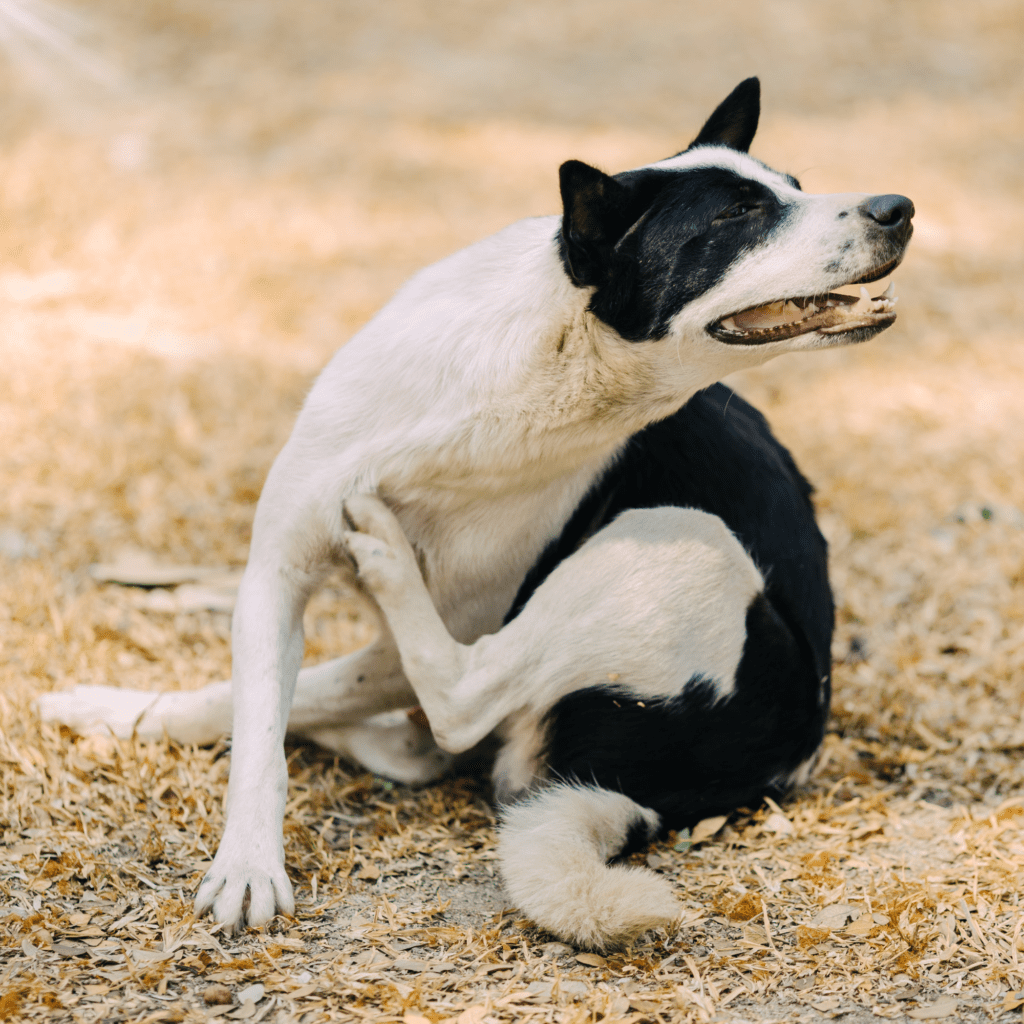This “How to Identify Dog Allergies: Symptoms and Treatment Options” post may contain affiliate links, which means I’ll receive a commission if you purchase through my link, at NO EXTRA COST TO YOU
How to Identify Dog Allergies: Symptoms and Treatment Options
Dogs, just like humans, can suffer from allergies. In fact, allergic reactions in dogs are more common than you might think. These reactions occur when a dog’s immune system overreacts to everyday substances such as pollen, food ingredients, or even flea saliva. If your dog constantly scratches, licks, or shows signs of discomfort, allergies may be the culprit. However, understanding the symptoms and knowing the solutions can make a huge difference in your dog’s health and comfort.
Common Symptoms of Dog Allergies
You might wonder how to tell if your dog has allergies. First and foremost, the symptoms can vary depending on the type of allergy. But there are several key indicators you should watch for.
1. Itchy Skin

One of the most frequent signs of allergies in dogs is incessant itching. Your dog might scratch or lick certain areas, particularly around the paws, belly, and ears. In more severe cases, you might even notice red, inflamed patches or bald spots where your dog has been scratching.
2. Red or Watery Eyes

Just like people, dogs can experience eye irritation due to allergies. If your dog’s eyes appear red, watery, or swollen, this could indicate an allergic reaction. Often, dogs with irritated eyes will rub their faces on furniture or with their paws to find relief.
3. Chronic Ear Infections

Recurring ear infections can also signal allergies. You might notice your dog shaking their head, scratching at their ears, or showing discomfort when their ears are touched. If left untreated, ear infections can lead to long-term damage, so it’s essential to address this symptom quickly.
4. Sneezing and Coughing

Sneezing isn’t just a human reaction to allergens. Dogs can sneeze and cough when they’re exposed to irritants like dust, mold, or pollen. Although sneezing might seem harmless, it’s often a sign of something more serious.
5. Digestive Issues

Food allergies in dogs often manifest as gastrointestinal problems. If your dog experiences vomiting, diarrhea, or excessive gas, this might be due to an allergic reaction to something in their diet.
6. Swelling or Hives

In more severe cases, your dog might develop swelling or hives, especially around the face, lips, or paws. This can indicate an acute allergic reaction and requires immediate attention.
Types of Dog Allergies
Identifying the type of allergy your dog suffers from can help you find an appropriate solution. Several common types of allergies affect dogs.
1. Environmental Allergies
Pollen, dust mites, mold, and grass can all trigger allergic reactions in dogs. Seasonal allergies, in particular, are caused by pollen and are more common during spring and fall. Environmental allergies usually lead to skin irritation and itching.
2. Food Allergies
Food allergies are another major concern for dogs. Ingredients like beef, chicken, dairy, eggs, and wheat can cause adverse reactions. Often, these allergies present through skin issues and digestive problems.
3. Flea Allergy Dermatitis
Many dogs are allergic to flea saliva. When a flea bites your dog, the saliva triggers intense itching and discomfort. Even a single flea bite can lead to a serious allergic reaction that requires immediate treatment.
4. Contact Allergies
Sometimes, your dog might be allergic to something they come into direct contact with, like cleaning products, certain fabrics, or chemicals. These allergies can cause localized skin reactions, usually around the areas that came into contact with the allergen.

Effective Solutions for Dog Allergies
Once you’ve identified the type of allergy, addressing the problem becomes much easier. However, each type of allergy requires a specific approach.
1. Managing Environmental Allergies
To help your dog cope with environmental allergies, frequent cleaning is key. First, vacuum your home regularly to remove dust mites, pollen, and other allergens. Next, wipe down your dog’s paws and fur after outdoor walks to minimize their exposure. Moreover, consider investing in air purifiers to improve indoor air quality.
Additionally, antihistamines like Benadryl can help reduce symptoms. However, always consult your vet before giving your dog any medication. In more severe cases, allergy shots (immunotherapy) can provide long-term relief by gradually desensitizing your dog to the allergens.
2. Treating Food Allergies
If you suspect your dog has a food allergy, start by conducting an elimination diet. Remove common allergens like beef, chicken, and wheat from your dog’s diet, and reintroduce them one at a time to determine the trigger.
Alternatively, you can switch your dog to a hypoallergenic diet. These special diets contain limited ingredients and are designed to minimize the risk of allergic reactions. Always work with your vet when transitioning your dog to a new diet to ensure it’s balanced and nutritious.
3. Controlling Flea Allergy Dermatitis
The best way to prevent flea allergy dermatitis is through flea control. Regular use of flea preventatives, such as topical treatments, flea collars, or oral medications, can keep fleas at bay. If your dog has already been bitten, soothing shampoos and anti-itch creams can help provide relief. In severe cases, your vet might recommend corticosteroids to reduce inflammation.
4. Avoiding Contact Allergies
To avoid contact allergies, try to identify and remove the offending material. For example, switch to hypoallergenic cleaning products and avoid using harsh chemicals around your home. If your dog has sensitive skin, using special shampoos formulated for allergies can prevent further irritation.
When to See a Vet
While mild allergies can be managed at home, certain symptoms require veterinary attention. If your dog develops hives, swelling, or has difficulty breathing, seek emergency care immediately. These could indicate a life-threatening allergic reaction called anaphylaxis. Additionally, chronic ear infections or severe itching that doesn’t improve with home treatments should be evaluated by a vet.
Conclusion
Dog allergies can cause significant discomfort, but understanding the symptoms and knowing the right solutions can make a huge difference in your pet’s life. From environmental triggers to food sensitivities, allergies come in many forms, but with proper care and attention, your dog can lead a happy, itch-free life. Always consult your vet for accurate diagnosis and treatment, and keep your home environment as allergen-free as possible. By being proactive, you’ll ensure your dog stays comfortable and healthy, no matter the allergy.
This blog gives you a comprehensive look into dog allergies, helping you spot the symptoms early and offering solutions to keep your pet comfortable. By addressing allergies head-on, you’ll not only improve your dog’s quality of life but also strengthen the bond you share with your furry companion.






